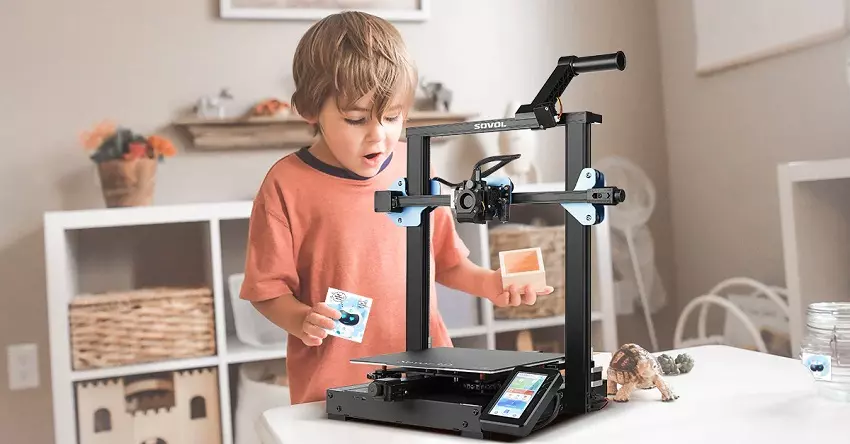3D printing is a technology that allows users to turn any digital file into a three dimensional physical product. 3D printing also allows for massive customization and unlike with music and movies, everything that is printed is unique. One of the good things about this printing technology is that it changes the dynamic of consumer culture. In other words, it turns users from being passive consumers to active creators.
How beneficial 3D printing is in education ?
Benjamin Franklin once said “Tell me and I forget, teach me and I may remember, involve me and I learn”. The presence and use of 3D printers in the classroom perfectly showcases the truth of this quote.
Schools are still in the early stage of adoption of this innovative technology, but the exciting thing is what is to come. 3D printing provides several features that can revolutionize education here are some of them :
· It provides teachers with 3 dimensional visual aids that they can use in their classroom particularly in illustrating a hard to grasp concept
· 3D printers make it easy for teachers to seize the interest of their students compared to just showing the pictorial representations of objects.
· It enhances hands-on learning and learning by doing. Using this prototyping technology, students will be able to produce realistic 3 dimensional mini-models . ( great for engineering, architecture, and multi-media arts students ).
· It provides more room for interactive class activities. In biology, for instance, teachers can create a 3D model of the human heart, head. Skeleton…etc to teach students about the human body.
Given all these attributes, 3D printing seems to hold some promising and ground-breaking innovation that will definitely assist in the fulfillment of a productive educational experience.
3D printing offers a way for students to truly connect to the subject matter by physically manipulating ready-printed teaching aids or by designing tools themselves. For K-12 students especially, this hands-on aspect of 3D printing in the classroom helps improve engagement and participation.
3D printers make it easy for teachers to seize the interest of their students compared to just showing the pictorial representations of objects. It enhances hands-on learning and learning by doing. Using this prototyping technology, students will be able to produce realistic 3 dimensional mini-models
In short, 3D printing technology positions students as creators. ...
· Bringing art back. ...
· Engaging reluctant learners. ...
· Creating responsible digital citizens. ...
· Making everything hands-on. ...
· Building school camaraderie. ...
· Solving real-world problems.

Benefits of 3D Printers in the Classroom
Applying 3D printing in education has a wide variety of important uses in primary and secondary schools, universities, libraries, technical colleges, and other educational settings.
There are quite a few benefits of 3D printers for education. First, they’re a great way to engage students in active, hands-on learning. They real-world STEAM skills like critical thinking, problem-solving, creativity, and innovation. Students can work together as they expand their imaginative thinking and teamwork skills.
3D printers for schools can also help teach curriculum. A lot of students struggle with abstract concepts, but 3D printing provides visual models that can help students learn these more difficult ideas. They can also supplement the curriculum of almost any school subject. For example, history students can create models of historical artifacts and language arts students can print objects that represent symbols from their readings.
1. Science
Being able to 3D print products for science helps students grasp material. A great example is when trying to teach geology concepts, like how land-forms are created. If students research concepts such as erosion, deposition, and weathering, then they can use 3D printers to create models of rivers or mountains. It reinforces science material in a way that lets students explore concepts to their fullest.
2. Technology
Technology is a huge part of today’s society, and anytime students get to link their learning with something they use everyday, they are more engaged and ready to learn. With 3D printers for schools, students use technology every time they create and print something. But there are other technology applications for 3D printing, too. For example, students can create and print their own cell phone cases. It’s captivating and exciting for students to make something they can use everyday.
3. Engineering
One of the best ways to incorporate engineering into curriculum is to use a lot of project-based learning. 3D printers for education provide an easy and cost-effective way to students to practice the steps of the design process: test their ideas, have the freedom to make mistakes, fix design issues, and complete multiple trials. They also let schools expand engineering curriculum to include design and computer-based skills.
4. Art and Design
3D printing is not much different from art, especially if you compare it to other three dimensional art forms like sculpture or clay. But in the world of art and design, 3D printers have been used to push boundaries in fashion and graphic design. It’s even extended into the field of music, with students tasked with designing and printing working instruments.
5. Math
Concepts in mathematics can become pretty complex. When students struggle to understand a new idea with just a diagram, say on a worksheet or white board, 3D printing can really help. It’s easier for students to grasp 3D concepts if they can see a 3D model, or better yet, design one themselves.



(1)-ZI1.webp)



.webp)



